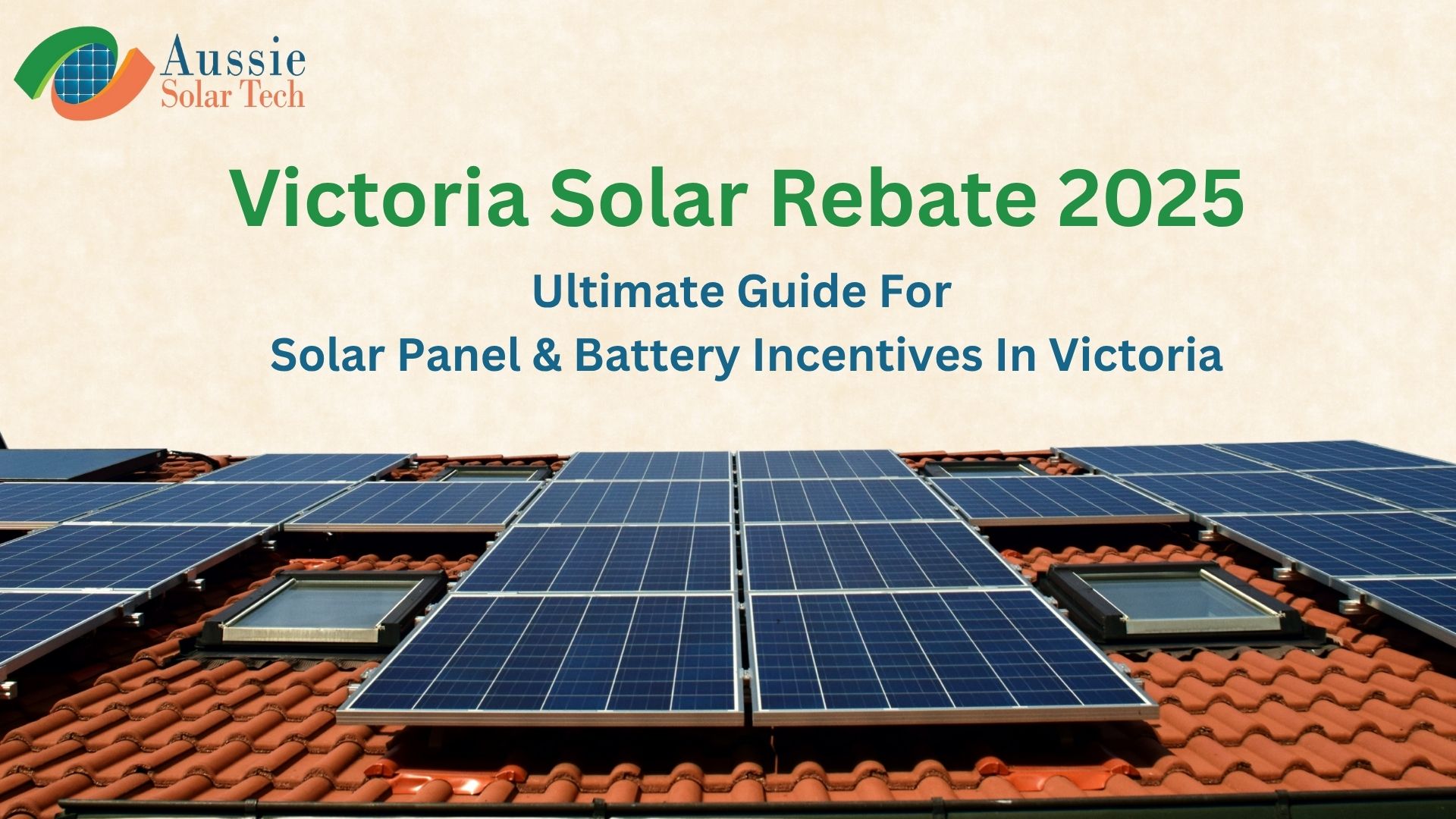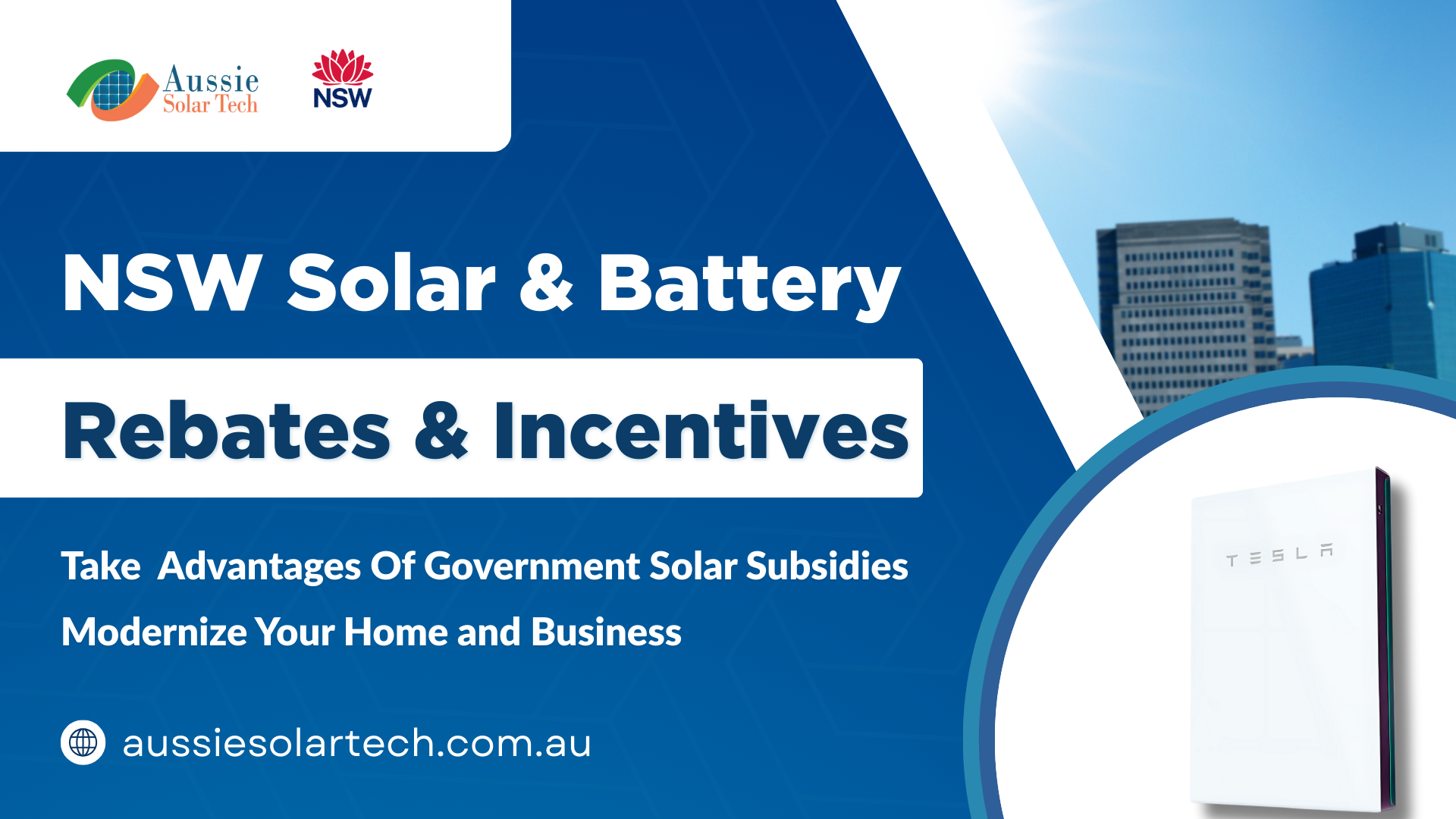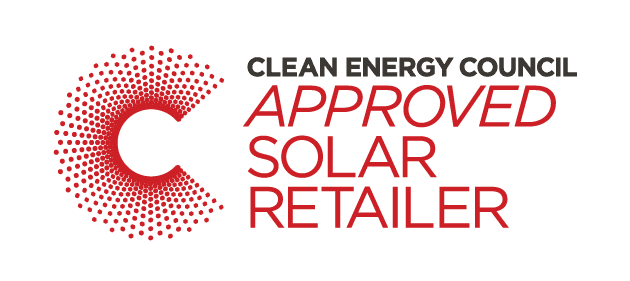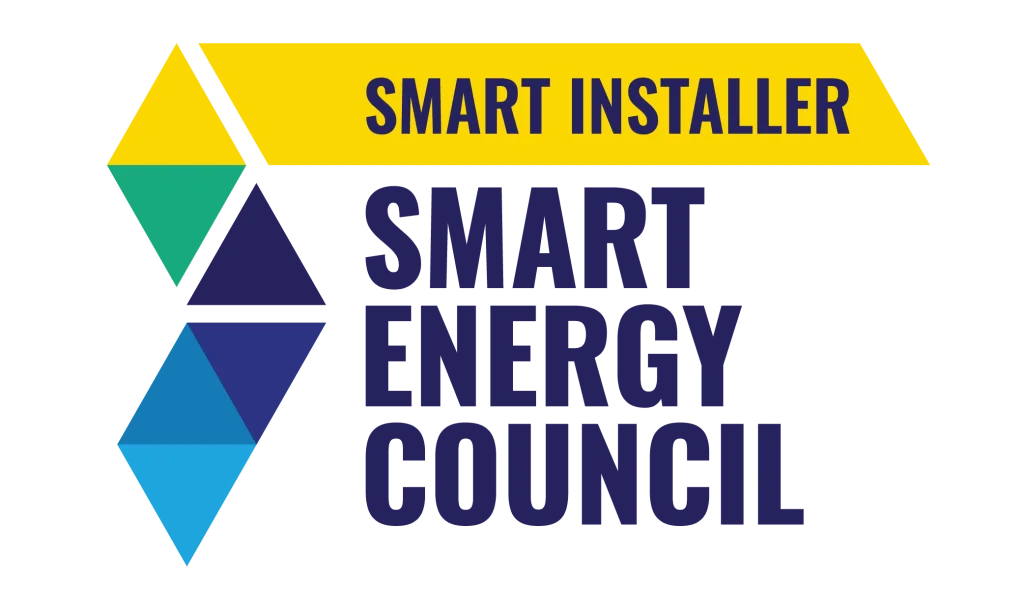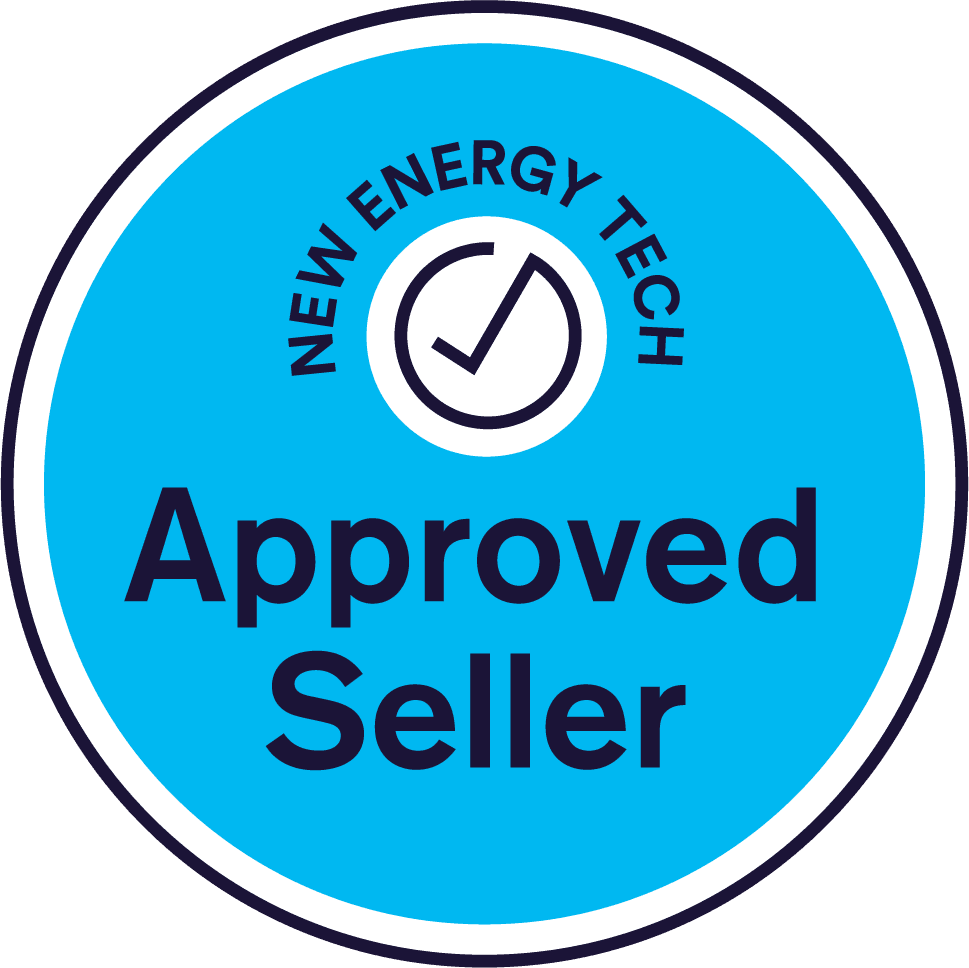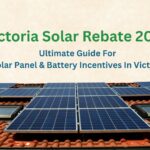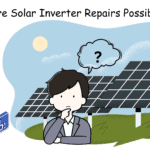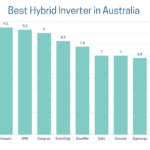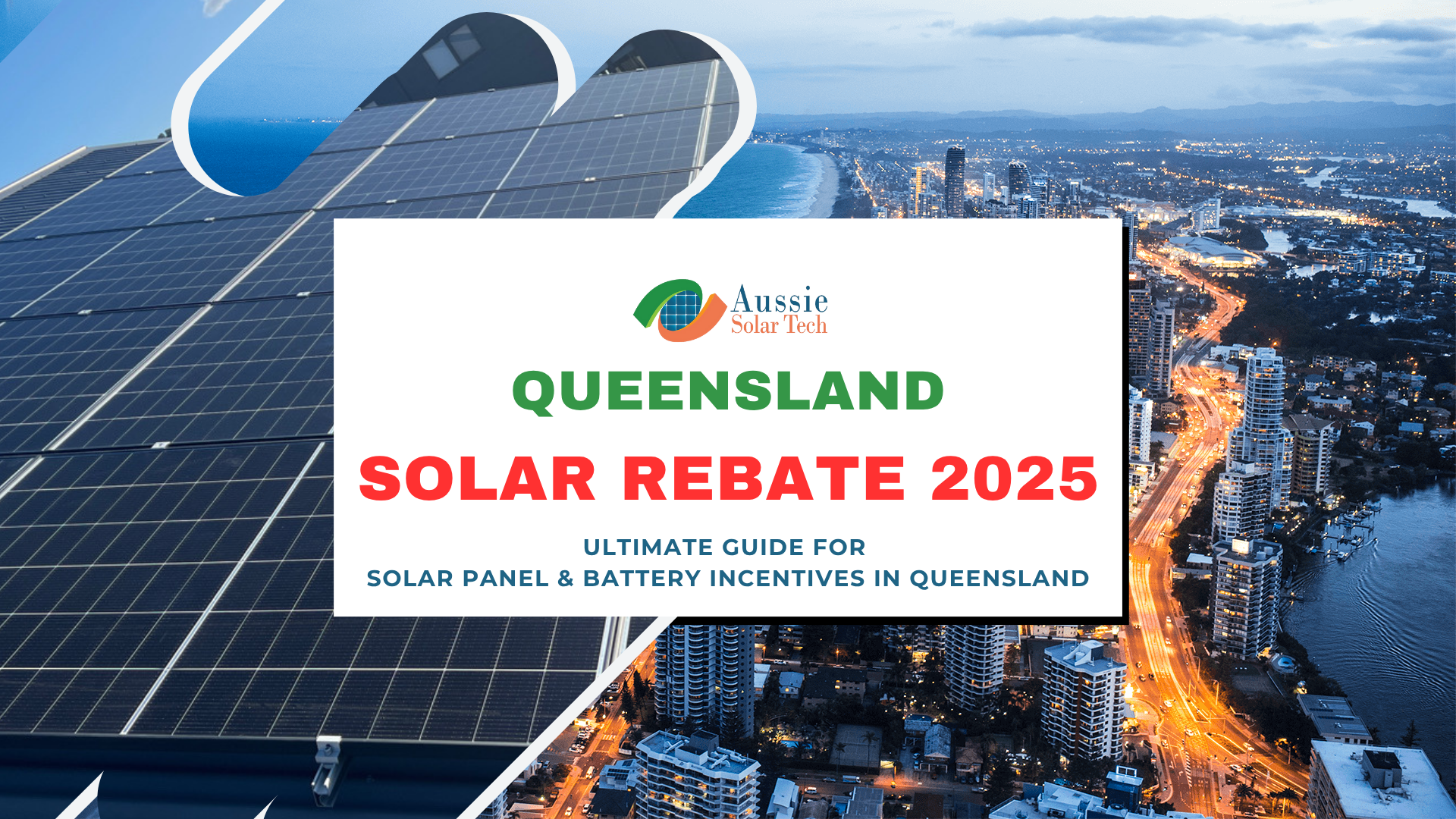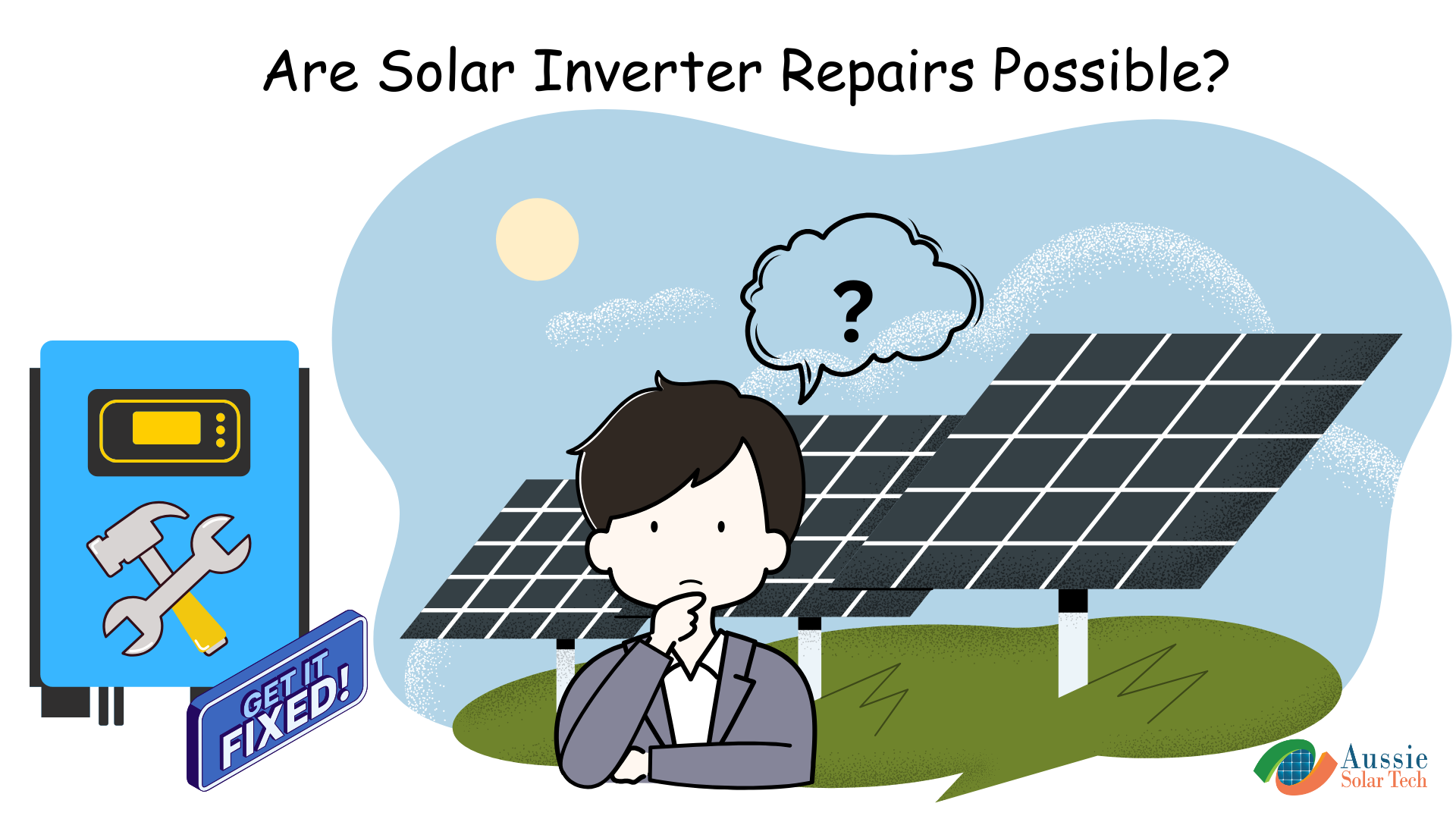Best Hybrid Inverters for Home Solar Systems in 2025
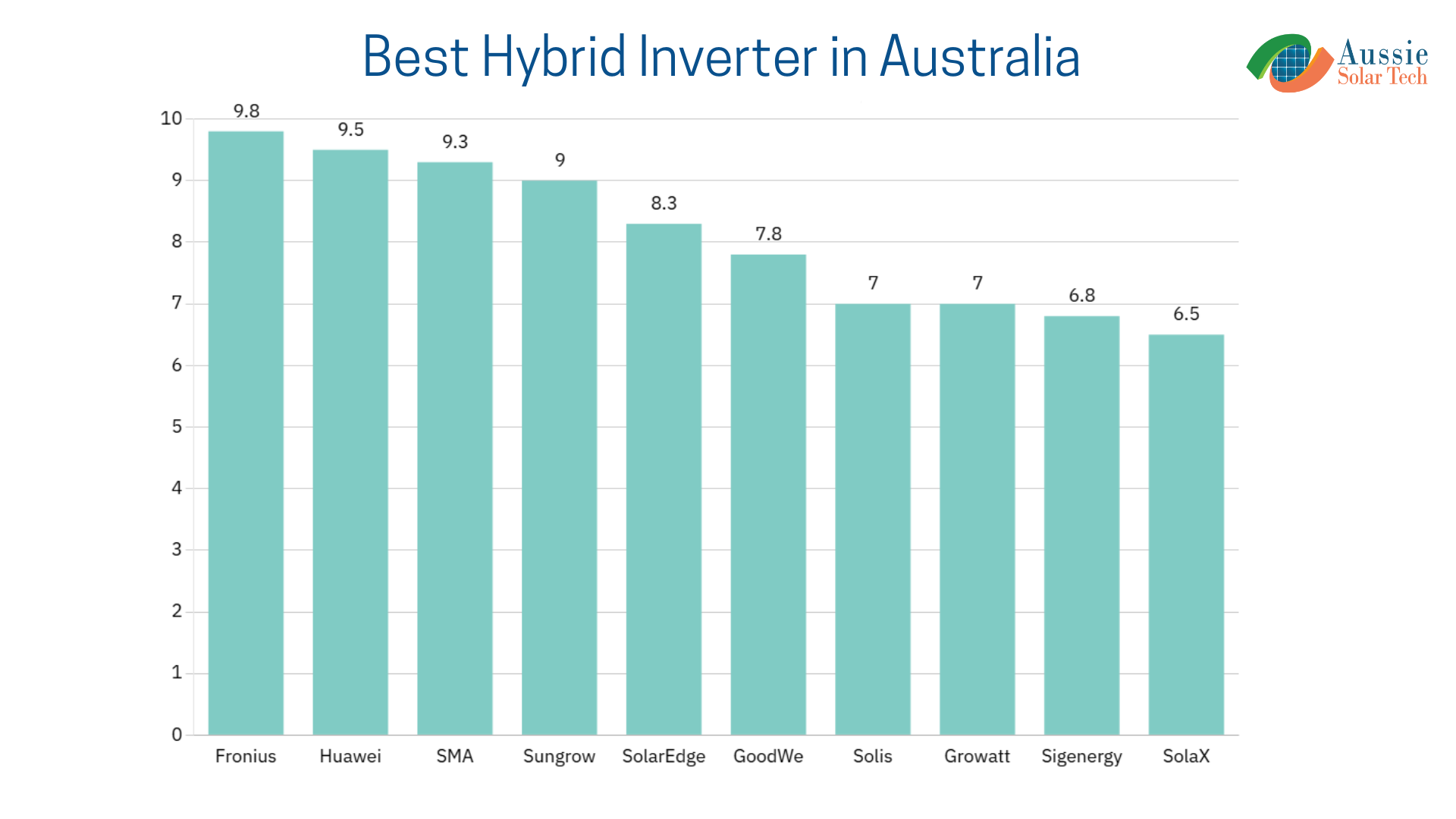
In This Article
ToggleAs Australia continues its exciting journey towards renewable energy, hybrid inverters are a game-changer for homeowners who are seeking to maximise their solar power systems. In 2025, demand for efficient, reliable, and versatile hybrid inverters is at an all-time high. These devices convert DC electricity from solar panels into AC power for home use. It also manages energy storage systems, which allows homeowners to store excess energy for later use.
With more than 10 years of experience in Australia’s solar industry, I can help you choose the best hybrid inverters for your home in 2025. I’ll explain the features, benefits, downsides, and which ones work best for your needs. Whether you’re new to solar or want to upgrade, this guide will help you decide.
Types of Inverters
Normally, we see many types of solar inverters in the Market. So, the decision-making is a little complex for Australian customers. As an expert, it is our responsibility to give you the best option and help you better understand this. Now let’s see the available options:
- String Inverter
String inverters are the most common type of solar inverters for homes. It changes the DC electricity to AC electricity. Usually, to use a string solar inverter, you only need one solar panel system. Multiple solar panels can also be connected to this inverter. - Micro-Inverter
Microinverters are a type of solar inverter technology installed at each panel. They help each panel work at its best, even if part of your roof is shaded. If one microinverter stops working, the others keep changing DC to AC since each panel has its own inverter. Microinverters offer many benefits, such as rapid shutdown capabilities, flexibility for panel layouts, and panel-level monitoring and diagnostics. Microinverters are typically more expensive than traditional string inverters. - Hybrid Inverter
A hybrid inverter is a single device that combines the functions of a solar inverter—which converts direct current (DC) from solar panels into alternating current (AC) for household use—and a battery inverter/charger, which converts AC from the grid into DC to charge a battery and vice versa. If the energy produced by the solar panels exceeds the household’s immediate AC demand and the battery is fully charged, the hybrid inverter can export the excess AC electricity to the grid.
- Central Inverter
Central inverters are used in large solar panel systems, like those for commercial buildings. They work like string inverters but on a bigger scale. All the solar panels connect in a combiner box, sending the DC power to the central inverter to convert it to AC. - Power Optimizers
Power optimisers are like microinverters but don’t convert DC to AC at the panel. Instead, they improve the DC power from each panel before sending it to a central string inverter. This helps reduce performance issues from shading or mismatched panels. Power optimisers offer a good balance between the cost of string inverters and the performance of microinverters.
What is A Hybrid Inverter?
A hybrid solar inverter is a piece of equipment that is created by combining a solar inverter and a battery inverter into a single unit. This allows the hybrid solar inverter to intelligently handle power coming from your solar panels, solar batteries, and the utility grid all at the same time.
The direct current (DC) electricity generated by your photovoltaic (PV) system is changed into the alternating current (AC) electricity that is used to power your home. This type of solar grid-tie inverter also makes it possible to send any excess electricity generated to the utility grid.
The process of converting the DC electricity that is stored in your solar battery storage into AC electricity that can be used by your home is managed by a battery inverter.
A solar hybrid grid-tie inverter makes the work of a traditional solar inverter easier and better by putting all of its functions into a single device. These features include grid connection and solar panel charging. Even better, because the amount of solar power that is available can vary depending on the weather and the time of year, a hybrid inverter can, if necessary, draw power from the electricity grid to charge your battery storage system. This is a significant benefit because the amount of solar power that is available can change.

For Australian homeowners, where sunshine is abundant but grid reliability can vary, hybrid inverters offer an ideal solution for energy independence and efficiency.
We explain more about this in the section- Can Hybrid Inverters Boost Your Solar Power System’s Efficiency?
Hybrid Inverter System Operating Modes Explained
Hybrid inverters, also called multi-mode inverters, can operate in different modes depending on household power consumption and backup power requirements. Like regular string solar inverters, hybrid inverters also convert solar DC(Direct Current) power from strings of solar panels to AC (Alternating Current) power used to power your home. However, excess solar energy is used to charge a connected battery system or exported to the electricity grid.

Basic hybrid system power flow diagram: Solar DC power is used to either charge the battery or convert to AC power and fed to the household or the electricity grid.
Most hybrid inverters’ default operating mode is directly from the solar panels to the household loads. If the solar panel generates more power than is being used, then the excess solar energy is used to charge the battery. Once the battery is full, and if the loads are lower than the solar output, excess power is exported to the electricity grid. The reason for this process is to reduce grid electricity consumption.
A hybrid inverter is a single device that combines:
- Solar inverter (converts DC from solar panels to AC for household use)
- Battery inverter/charger (converts AC from the grid to DC to charge the battery and vice versa)
This means that hybrid inverters already have the capability to charge a battery from both your solar panels and the grid, depending on how they’re set up.
A hybrid inverter can send power in different directions at the same time and switch between modes smoothly. Here’s how it decides what to do with your solar energy, in order of priority:
- Solar Priority: At First, the hybrid inverter uses the solar power to run your home’s appliances, like lights, fridges, or TVs.
- Battery Priority: If there’s extra solar power, it charges your battery that is connected to the inverter. In that way, it stores energy to use it at night.
- Grid Priority: If your battery is fully charged and your home doesn’t need more power, the extra solar energy is sent to the grid (unless you limit this with settings).
- Backup Mode: If the grid goes down (like during a blackout), the inverter switches to battery power to keep your home appliances running.
- Force Charge Mode: You can also set the inverter to charge the battery during off-peak times when electricity is cheaper (this is optional).
- Backup Power Mode: This enables automatically during outages to keep essential appliances powered.
Backup power mode:
If there is a blackout or the grid becomes unstable, in this situation, the hybrid inverter acts fast. It automatically disconnects from the grid to keep your home safe and switches to backup power from your battery. Most hybrid inverters do this in less than 0.03 seconds, so you can’t even notice the change. Some models might take 10 to 60 seconds to switch, which can let you know there’s an outage, so you can start saving battery power.
It is important to note that not all hybrid inverters are capable of continuous backup (off-grid) operation due to limited power output and restricted functionality during a blackout. More advanced off-grid inverters should be considered for locations with frequent, prolonged grid outages.
Why Choose a Hybrid Inverter for Your Home Solar System?
Here are a few reasons why you should choose a hybrid inverter :
- Maximized Solar Usage: Using a hybrid inverter allows you to save additional solar energy in a battery rather than forwarding it to the grid. This means you can use the sun’s power even at night or even in cloudy days. For example, if your solar panels produce more electricity than you need, the hybrid inverter will save it for using it when the sun’s power is not available, which helps you to get the best benefit of your solar system.
- Backup Power: Power outages can occur, particularly in certain regions of Australia where storms or other issues impact the grid. A hybrid inverter collaborates with your battery to supply backup power, ensuring your lights, fridge, and other essential components remain functional when the grid fails. It can make you feel like you have your own mini power station at home!
- Grid Independence: Reduce your dependency on the grid, which helps lower your energy bills and carbon footprint. By using a hybrid inverter to store and manage your solar energy, you don’t need to buy as much electricity from the grid. This can lower your energy bills over time. Also, using more of your own clean solar power reduces your carbon footprint, helping the environment—a win-win for you and the planet!
- Home Battery Energy Storage System (BESS) Management
A hybrid inverter is the brain of your home battery energy storage system (BESS), automatically managing when to store, discharge, or draw power from the battery. It ensures your system runs smoothly and efficiently, balancing solar energy, battery usage, and grid interaction. - Future-Proofing: Solar technology is always improving, with better batteries and smarter technology every year. A hybrid inverter is designed to work with new battery types and upgrades, so your solar system stays up-to-date. It is a smart way to future-proof your home’s energy setup. As battery technology evolves, a hybrid inverter ensures your system is ready for upgrades in the future.
- Easy to Monitor and Control: Most hybrid inverters have apps or displays. With that app or display, you can check how much energy your solar panels are producing and how much you’re storing in your battery, and how much you’re using. This makes it simple to understand your system and make smart choices about your energy use.
Top 10 Best Hybrid Solar Inverters in Australia
To make your home solar system efficient, reliable, and future-proof, choosing the right hybrid inverter is the key. Based on the latest industry trends, performance, and user feedback, here’s our ranking of the top 10 hybrid inverters for 2025, including key features and why they’re perfect for Australian homes, pros, and cons.
1. Fronius Primo GEN24 Plus
Description(Fronius Inverter): Now in the market, the Fronius Primo GEN24 Plus is a top-tier hybrid inverter because of its quality and integrated backup power. Available in power ranges from 3 to 6 kW, it’s designed for small to medium-sized households. Its standout feature is the ability to work with or without a battery, offering flexibility for future upgrades. This inverter is ideal for Australian homes that are seeking reliability. Fronius Inverter is also made in Australia.

The Fronius Primo GEN24 Plus is a premium hybrid inverter designed for residential solar systems, particularly popular in Australia for its reliability, efficiency, and advanced features. Manufactured by Fronius, an Austrian company with a strong reputation in solar technology.
Key feature:
- High Efficiency: Up to 97.7%, minimizing energy conversion losses.
- PV Point: Delivers up to 3 kW emergency backup without a battery.
- Battery Compatibility: Integrates seamlessly with BYD Battery-Box Premium and others.
- Fast Backup Switch: 10ms transition to backup power during outages.
- Smart Monitoring: Fronius Solar.web app for real-time energy tracking.
- Dynamic Peak Manager: Optimizes output in partial shade.
- Active Cooling: Fan-based system enhances durability in Australia’s heat.
Why It’s Perfect for Australian Homes:
- Reliable Backup: The PV Point ensures essential appliances stay powered during frequent Australian blackouts.
- Cost Savings: Stores excess solar energy for peak tariff hours, reducing grid reliance.
- Future-Proof: Supports evolving battery technologies, ideal for future upgrades.
- Local Support: Fronius’s strong Australian presence ensures quick service.
Pros:
- Durable build with a 10–15 year lifespan.
- Excellent local support with fast replacement services.
- Flexible battery integration with multiple brands.
- User-friendly Solar.web app for non-technical users.
- Reliable backup power for outages
- Seamless integration with BYD and other batteries.
Cons:
- Slightly bulkier design compared to competitors.
Higher upfront cost for budget hybrid inverters.
Warranty: 5 years standard (Fronius Warranty Plus, covering material, labor, and transport). Extends to 10 years (5+5) for inverters commissioned between 01/10/2024 and 31/12/2025, registered in Fronius Solar.web with a warranty certificate downloaded within 24 months of installation. An optional extension up to 20 years is available.
2. Huawei SUN2000L1
Description(Huawei Inverter): The Huawei SUN2000L1 hybrid inverter blends sleek design with AI-powered features, making it a favorite for tech-savvy Australian homeowners. Available in 3–10 kW, it’s suitable for a wide range of household sizes.

Key Features:
- High Efficiency: Up to 98.4%, among the highest in its class.
- Battery Compatibility: Pairs with Huawei LUNA2000 batteries.
- AI Arc Fault Protection: Enhances safety with smart fault detection.
- Smart Monitoring: FusionSolar app for detailed energy insights.
- Wide Voltage Range: Supports flexible solar panel configurations.
- Compact Design: Lightweight and easy to install.
Why It’s Perfect for Australian Homes:
- Energy Savings: High efficiency and battery storage reduce grid costs.
- Safety Features: AI protection suits Australia’s strict electrical standards.
- Modern Design: Compact size fits small spaces, common in urban homes.
- Smart Integration: Supports agile tariffs for cost optimization.
Pros:
- High efficiency minimizes energy loss.
- Stylish, compact design.
- Advanced safety features.
- User-friendly app experience.
Cons:
- Requires a separate backup box for outages.
Limited compatibility with non-Huawei batteries.
Warranty: 10 years standard, covering material costs. Repairs may require shipping to Huawei, which could cause downtime.
3. SMA Sunny Boy Storage
Description(SMA inverter): The SMA Sunny Boy Storage is a versatile hybrid inverter designed for small to medium Australian homes, offering flexibility and robust battery integration. Available in 3.7–6 kW, it’s ideal for households prioritizing reliability and efficiency.

Key Features:
- High Efficiency: 97.5%, reducing energy losses.
- Battery Compatibility: Works with high-voltage batteries like LG Chem.
- Wide MPPT Range: 100–550V for flexible solar setups.
- Fast Backup Switch: 10ms transition to backup power.
- Smart Monitoring: SMA Smart Connected app for energy tracking.
- Scalable Design: Supports multiple batteries for increased storage.
Why It’s Perfect for Australian Homes:
- Reliable Backup: Fast switchover ensures power during outages, common in regional areas.
- Energy Savings: Stores solar energy for peak tariff hours, cutting bills.
- Durable Build: Designed for a 10–15 year lifespan, suited for Australia’s climate.
- Local Support: SMA’s strong Australian presence ensures quick service.
Pros:
- Flexible for various home sizes.
- Excellent battery integration.
- Long lifespan with robust build.
- Fast replacement support in Australia.
Cons:
- The app interface is less intuitive than competitors.
- Limited surge capacity for large appliances.
Warranty: 10 years standard, with optional extensions up to 20 years. SMA offers excellent local support, typically shipping replacement units in 3-5 business days.
4. Sungrow SH-RS Series
Description(Sungrow Inverter): The Sungrow SH-RS Series is a popular hybrid inverter in Australia, known for its affordability and robust performance. Available in 3–10 kW, it’s designed for most households, offering reliable solar and battery management

Key Features:
- High Efficiency: 98%, ensuring low energy loss.
- 200% Solar Oversizing: Supports large solar arrays.
- PID Recovery: Protects panels from degradation.
- Fast Backup Switch: 10ms transition to backup power.
- Smart Monitoring: iSolarCloud app for energy tracking.
- IP65 Protection: Durable for outdoor installation.
Why It’s Perfect for Australian Homes:
- Cost-Effective: Affordable pricing suits budget-conscious households.
- Reliable Backup: Fast switchover supports outage-prone areas.
- Durable Design: IP65 rating handles Australia’s harsh weather.
- High Surge Power: Supports large appliances during peak demand.
Pros:
- Great value for money.
- High surge capacity for heavy loads.
- Wide MPPT range for flexible setups.
- Strong local support in Sydney.
Cons:
- Limited to Sungrow batteries.
- Basic app interface compared to Huawei.
Warranty: 10 years standard, with excellent support from Sungrow’s Sydney-based office. Replacement units are typically shipped quickly.
5.SolarEdge StorEdge
Description(SolarEdge Inverter): The SolarEdge StorEdge hybrid inverter leverages HD-Wave technology and power optimizers for panel-level efficiency, making it perfect for Australian homes with complex roofs or shading. Available in 5–6 kW, it’s designed for seamless solar and battery integration.

Key Features:
- High Efficiency: Up to 98%, reducing energy losses.
- DC-Coupled Design: Supports 200% solar oversizing for maximum output.
- Battery Compatibility: Works with LG Chem RESU and SolarEdge Home Battery.
- Fast Backup Switch: 10ms transition to backup power.
- Smart Monitoring: SolarEdge app provides detailed panel-level insights.
- Power Optimizers: Enhance performance in shaded or multi-oriented roofs.
Why It’s Perfect for Australian Homes:
- Shading Solution: Power optimizers ensure maximum energy harvest in Australia’s variable sunlight conditions.
- Backup Power: Fast switch ensures uninterrupted power during outages.
- Energy Savings: Stores excess solar for evening use, cutting grid costs.
- Scalability: Supports additional batteries for growing energy needs.
Pros:
- Panel-level optimization boosts output on complex roofs.
- Reliable backup with fast switchover.
- Sleek design with user-friendly app.
- Strong local support in Australia
Cons:
- Requires power optimizers, increasing initial cost.
- Limited battery compatibility compared to Fronius.
Warranty: 12 years standard, extendable to 20 or 25 years. Replacement units are typically shipped within 3-5 business days with strong local support in Australia.
6.GoodWe ET Series
Description(GoodWe Inverter): The GoodWe ET Series hybrid inverter offers a cost-effective solution with strong performance for Australian households. Available in 5–10 kW (three-phase), it’s ideal for larger homes seeking reliable solar and battery integration.

Key Features:
- High Efficiency: 98%, ensuring low energy loss.
- Dual MPPTs: Optimizes energy from multiple solar arrays.
- Battery Compatibility: Supports high-voltage batteries like BYD.
- Backup Switch: 20ms transition to backup power.
- Smart Monitoring: GoodWe SEMS app for energy tracking.
- IP66 Protection: Durable for outdoor installation.
Why It’s Perfect for Australian Homes:
- Affordable Performance: Balances cost and quality for larger households.
- Reliable Backup: Supports outage-prone areas with decent switchover speed.
- Durable Design: IP66 rating withstands Australia’s weather extremes.
- Energy Savings: Stores solar for peak tariff hours, reducing bills.
Pros:
- Great value for three-phase systems.
- Reliable performance for most homes.
- Easy battery integration.
- Durable outdoor design.
Cons:
- Slower backup switch (20ms) than competitors.
- Fewer advanced features than premium brands.
Warranty: 10 years standard, covering material costs. Repairs may require shipping, which could lead to longer downtime.
7. Solis S6
Description(Solis Inverter): The Solis S6 hybrid inverter is a reliable, budget-friendly option for Australian homes with simple solar needs.

Key Features:
- High Efficiency: Up to 97.5%, ensuring minimal energy loss during conversion.
- Dual MPPTs: Supports two Maximum Power Point Trackers for efficient energy harvest from multiple solar arrays or shaded roofs.
- High Charge/Discharge Capacity: Supports 135A/6kW charge and discharge, providing high energy throughput.
- Fast Backup Switch: Less than 10ms transition to backup power, ensuring seamless operation during outages.
- Battery Compatibility: Works with both lithium-ion and lead-acid batteries, including Pylontech US2000C/US3000C/US5000 and Fox LV52.
- Smart Monitoring: SolisCloud app enables real-time energy tracking, remote troubleshooting, and firmware upgrades.
- Surge Power Overload: 200% overload capacity for 10 seconds, supporting critical loads during peak demand.
Why It’s Perfect for Australian Homes:
- Reliable Backup Power: The fast 10ms switch and 200% surge capacity ensure essential appliances stay powered during Australia’s frequent blackouts, such as those caused by storms or bushfires.
- Cost Savings: Stores excess solar energy for use during peak tariff hours, reducing electricity bills with flexible modes like self-consumption and timed charge/discharge.
- Durable Design: Fanless with IP65 protection, it’s built for Australia’s harsh climate, from coastal humidity to outback heat.
- Scalability: Supports parallel connections for single- or three-phase systems up to 36 kW, ideal for future expansions
Pros:
- Cost-effective for small systems.
- Easy to install.
Quiet and durable design.
Cons:
- No state-of-charge timer mode.
SolisCloud app has usability issues.
Warranty: 10 years standard, covering material costs. Replacement or repair may involve shipping, potentially increasing downtime.
8. Growatt SPH5000
Description(Growatt Inverter): The Growatt SPH5000 is a single-phase hybrid inverter designed for Australian households, balancing affordability and performance. With a 5 kW output, it’s suitable for small to medium homes, offering reliable solar and battery integration for new or retrofit systems.

Key Features:
- High Efficiency: Up to 97.6%, ensuring efficient energy conversion.
- Dual MPPTs: Optimizes energy from two solar arrays.
- IP65 Protection: Weatherproof for indoor or outdoor use.
- Battery Compatibility: Supports lithium-ion batteries (e.g., BYD, Pylontech).
- Smart Monitoring: Growatt’s Online Smart Service for real-time tracking.
- Fast Backup Switch: 16ms transition to backup power.
Why It’s Perfect for Australian Homes:
- Affordable Option: Competitive pricing makes it accessible for budget-conscious households.
- Reliable Backup: Quick switchover ensures power during outages common in rural areas.
- Durable Design: IP65 rating suits Australia’s harsh weather conditions.
- Flexible Integration: Works with multiple battery brands, ideal for upgrades.
Pros:
- Cost-effective without compromising quality.
- Easy one-person installation.
- Wide battery compatibility.
- Reliable performance with local support.
Cons:
- Not compatible with lead-acid batteries.
- Limited surge capacity for high-power appliances.
Warranty: 10 years standard, covering material costs. Replacement units are typically shipped quickly with support from Growatt’s Australian offices.
9.Sigenergy SigenStor Hybrid Inverter
Description(Sigenergy Inverter): The Sigenergy SigenStor hybrid inverter is a cutting-edge, all-in-one solution that integrates solar, battery, and EV charging, gaining popularity in Australia for its innovative features.

Key Features:
- High Efficiency: Up to 98.5%, maximizing energy use.
- Modular Design: Supports 2–4 MPPTs and 5–48 kWh SigenStor batteries.
- EV Charging: Bidirectional DC charging up to 25 kW with V2H support.
- Fast Backup Switch: 5ms transition with black-start capability.
- Smart Monitoring: mySigen app with AI-powered energy management.
- 200% PV Oversizing: Handles high-power solar panels efficiently.
Why It’s Perfect for Australian Homes:
- All-in-One Solution: Combines solar, storage, and EV charging, ideal for tech-savvy households.
- Fast Backup: Ensures seamless power during Australia’s frequent outages.
- Scalability: Modular batteries suit growing energy needs, common in urban areas.
- Smart Integration: VPP-readiness and EV compatibility align with Australia’s green energy trends.
Pros:
- Modular design for easy upgrades.
- Fastest backup switch (5ms) in its class.
- Supports vehicle-to-home (V2H) functionality.
- High efficiency with robust app.
Cons:
- Newer brand with less long-term reliability data.
- Higher cost due to advanced features.
Warranty: 10 years standard, covering material costs. Replacement units are supported through Sigenergy’s Sydney office, though long-term service track record is still developing.
10. The SolaX X1 Hybrid G4
Description(Solax Inverter): The SolaX X1 Hybrid G4 is a cutting-edge hybrid inverter designed for residential solar systems in Australia, offering seamless integration of solar panels, battery storage, and the grid. Available in power ratings from 3 to 7.5 kW, this single-phase inverter is ideal for small to medium-sized homes. Known for its advanced technology and affordability, it provides energy independence, backup power, and compatibility with smart energy solutions, making it a top choice for Australian homeowners.

Key Features:
- High Efficiency: Achieves up to 97.8% efficiency, minimizing energy loss during DC-to-AC conversion.
- Super-Backup Function: Supplies backup power from solar panels (without a battery) during outages, with up to 150% EPS output for 10 seconds.
- Dual MPPTs: Supports two Maximum Power Point Trackers for optimal energy harvest, even with complex roof orientations or partial shading.
- IP65 Protection: Weatherproof design suitable for indoor or outdoor installation, perfect for Australia’s diverse climates.
- Smart Monitoring: SolaX Cloud app enables real-time energy tracking and remote upgrades for easy management.
- Battery Compatibility: Supports lithium-ion and lead-acid batteries, including SolaX Triple Power (e.g., T30 3kWh, T58 5.8kWh).
- 200% PV Oversizing: Handles high-power solar panels with a low start-up voltage (50V) for extended operation.
Pros:
- Cost-Effective: Competitively priced compared to premium hybrid inverters like Fronius or SolarEdge.
- Versatile Operation: Supports on-grid, off-grid, and parallel modes, with VPP-readiness for future energy market opportunities.
- Robust Design: IP65 rating and high-temperature performance (up to 45°C) ensure durability in Australia’s harsh climate.
- User-Friendly Monitoring: SolaX Cloud provides intuitive insights into energy production and consumption.
Cons:
- Limited Surge Capacity: 150% EPS output is lower than some competitors (e.g., Sol-Ark’s 24kW peak).
App Usability: SolaX Cloud app may have occasional connectivity issues, less polished than SolarEdge or Fronius apps.
Warranty:
Standard Warranty: 10 years standard, covering material costs. Replacement units are typically shipped quickly through SolaX’s Australian support network, though repairs may involve shipping, potentially causing minor downtime.
Find The Best Hybrid Inverter in Australia
The chart below shows the scores of individual hybrid inverters (only the brand names are listed, but the scores are based on the performance of all the specific inverters discussed above).

We estimate a range of the best hybrid inverters and score them out of 10. Fronius comes out on top with 9.8, making it the best choice. Huawei and SMA follow closely with 9.5 and 9.3, both offering great performance. Sungrow is also a top pick, scoring 9.0. In the middle range, SolarEdge has a rating of 8.3, and GoodWe is at 7.8, which are decent but not the best. Solis and Growatt are tied at 7.0, showing average performance. Sigenergy scores 6.8, and SolaX is the lowest at 6.5. The graph makes it easy to see which hybrid inverters are the most reliable for Australian homes.
Still confused? Need advice from an expert?
Amazing Benefits of the Best Hybrid Inverters
These smart devices combine solar power, battery storage, and grid connectivity to save you money and make your home more sustainable. Here are some amazing benefits that you may get:
1. Economic advantages: There are many economic advantages of the best hybrid inverters over conventional systems. It can save you money by reducing electricity bills and also help you to reduce your carbon footprint.
2. Environmental sustainability: Environmental sustainability is another huge benefit of the hybrid inverter. It consumes less energy and produces less waste than traditional systems.
3. Reduced noise level: One of the benefits of using a hybrid inverter is that it produces less noise than a conventional system. For those of you who do not like to live in noisy environments, this is helpful.
4. Efficient: It is efficient to have a hybrid inverter, which means they can save you money on your energy bills. It can also improve your efficiency rating, which means you will see lower overall energy consumption.
5. Increased durability: The construction of a hybrid inverter is long-lasting, which is one of its main advantages over traditional systems. Hybrid inverter is more durable and easier to maintain.
Real-Life Example: How Hybrid Inverters Benefit Australian Homeowners
One of our customers, the Johnson family in Queensland, installed a 6kW solar system with a hybrid inverter. By storing excess daytime energy in their battery, they reduced grid dependence by 70%. During a storm-induced outage, their hybrid inverter switched to battery power, keeping essentials running. This shows how hybrid inverters have its good impact in Australia. Want to reduce your grid dependency also?
Choosing the Right Hybrid Inverter for Your Home
Before selecting a hybrid inverter, you should consider these factors:
- Efficiency: Make sure the efficiency ratings are above 96% for maximum energy conversion.
- Battery Compatibility: Make sure it will work with your battery system.
- Power Output: Match it with your energy needs and future expansion plans.
- Monitoring: Prioritize inverters with user-friendly apps for real-time performance tracking.
- Warranty and Support: Make sure a strong warranty and local Australian support are available.
Conclusion
As solar technology improves, hybrid inverters are now key for home solar systems. In 2025, the best hybrid inverters are efficient, reliable, and suited to Australia’s energy needs.. A hybrid inverter is a device that lets you use more of your solar power, save money by using less electricity from the grid, and keep the lights on during blackouts. Whether you want to use more solar power, depend less on the grid, or have backup power, a good hybrid inverter is a smart choice. It’s like a superhero for your home’s energy! At Aussie Solar Tech, we help families choose the best one to make their solar system great.
Want to get started? Contact Aussie Solar Tech today for a free, no-pressure chat. Let’s make 2025 the year you fully control your solar power and create a truly sustainable home.

Shah Tarek is a Solar Energy Consultant with 10 years experience in solar system design and solar consultancy field at Australia. He is now a Director, Operation & Consultancy Division at Aussie Solar Tech, a leading Australian solar retailer and installer. Here he is writing informative and engaging solar content that educates the community on the benefits of solar power. His work supports Aussie Solar Tech’s mission to promote sustainable energy solutions and foster a greener future for Australia.
Recent Posts

